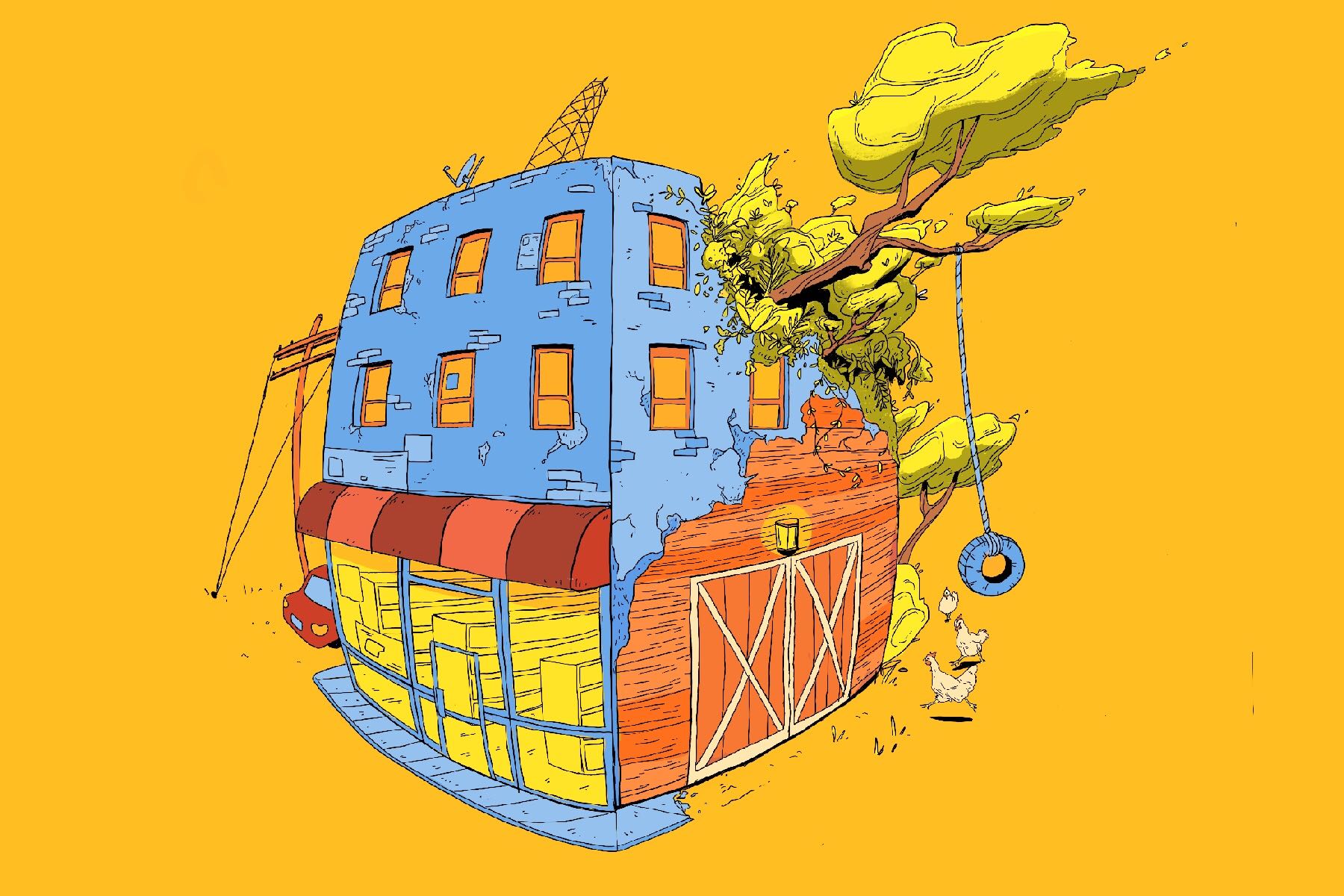Four years after making the difficult decision of what college to go to, graduates face another important decision. Where to next? Whether you’re leaving with a bachelor’s degree or a doctorate, all graduates must eventually decide where to plant their flag. Should a college graduate choose to take up in one of the world’s bustling, vibrant cities, or make a living in a charming, bucolic rural area?
The first step in making this decision is to look at the pros and cons.
The Cost of Living
It’s no secret that living in the city can mean you’ll have to deal with some very high prices. The cost of living index is a system that compares how much a person would spend on food, shelter, transportation, rent and other necessities in different places. This index shows that states with high percentages of rural areas (like Mississippi, Oklahoma and Arkansas) have a much lower cost of living compared to states with large urban centers (like Hawaii, California and New York).
To put this in simpler terms, the average cost of one dozen eggs in Honolulu, Hawaii is $4.31, while in in Little Rock, Arkansas (a smaller, more rural city), it would cost only $1.51, and costs typically get lower as towns get smaller. That’s right; recent college graduates might very well be able to afford a future in places where they can have more than instant ramen for dinner.
In terms of housing costs, it’s difficult to compare urban and rural areas because the markets are different. People are more likely to become homeowners in rural areas; rentals only make up 28.4% of housing in rural towns, whereas, in many places across America, city-dwellers are more likely to rent than own. New college graduates might have a harder time finding housing in rural areas, because this tendency to own instead of rent could pose a problem: The initial cost of buying a house is probably far more than our tuition-depleted savings can afford.
There’s also the matter of transportation. The cheaper cost of living in rural areas might be mitigated substantially with the added costs of a car and gas, because you’ll often have to drive to get to the nearest grocery store or movie theater. In a densely-packed city, where lots of stores are readily available, this is less of an issue, and public transportation can take city-dwellers where they need to go without needing to buy a car.
Job Availability
Cities are definitely ahead of rural areas when it comes to job opportunities because, for the most part, that’s where the best and the brightest flock after college. Just ask any college senior where they’re going next, and the answer will probably be New York, Boston, LA, Chicago or another big metropolitan area. But although the opportunities seem more plentiful in cities, college graduates shouldn’t discount rural areas.
Small towns still have quite a large demand for an educated workforce; they need doctors, nurses, technology experts and entrepreneurs, too. In fact, the smaller supply of college graduates may prove useful for anyone job-hunting in rural areas, because that means there’s less competition.
And it doesn’t end there. Interestingly, some rural areas are so in need of educated workers that they will pay college graduates to move there. For example, Hamilton, Ohio offers college grads up $10,000 to move there through their Talent Attraction Program Scholarships. These sorts of opportunities, combined with a lower cost of living, could make a big financial difference.
Social Life
You cannot discuss the decision of rural versus urban life without considering the social aspect. While it’s true that college grads might find a lot of what they’re looking for in the big cities — peers of a similar age, a vibrant nightlife, more frequent concerts with famous people and other fun opportunities — you shouldn’t immediately discount rural living because it doesn’t have the same attractions.
Contrary to popular belief, there is actually not a lot of variation between urban and rural areas when it comes to the percentage of recent college graduates that live there. In 2016, the percentage of college graduates in a large urban county was 28.6%, while 21.5% of the population in large, non-metro-adjacent rural counties are college-educated, which is not a huge difference. Furthermore, both percentages are increasing, showing that young college grads are still attracted to the small-town life.
Cities like New York, Los Angeles and San Francisco can boast their bars, clubs, music venues and other fun attractions, but this sort of lifestyle is not for everyone. For some college graduates, the close community ties and the familiarity of small, rural towns might be more appealing.
Urban areas outpace rural areas in terms of racial and ethnic diversity; urban residents statistically place a higher priority on diversity in their communities, while rural areas are still predominately white in comparison to cities.
On the other hand, while statistics do reflect the stereotype that cities are liberal and rural areas are conservative, the political landscape is not as polarized as some might think. According to The New York Times, 23% of city-dwellers lean conservative, while 38% are more moderate. Conversely, in rural areas, 20% identify as liberal and 37% label themselves as moderate. These numbers show that the traditional political stereotypes in urban and rural areas are somewhat exaggerated.
It’s Up To You
In the end, deciding where you’re going to live comes down to what you value more and what concessions you’re willing to make. Are you comfortable sacrificing more job opportunities, a bright nightlife and a more diverse community for the cheaper, less crowded and friendlier atmosphere of a rural area? Or are the dirty streets and high prices worth it for the benefits of living in a city? It’s up to you.
















